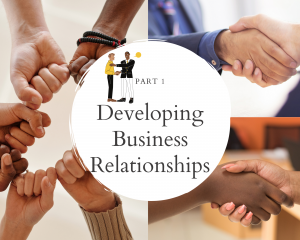1.0 Developing Business Relationships
University of Minnesota Libraries Publishing; Linda Macdonald; and Kayler Mutyabule

Successful business communication, like successful business, requires strategic and deliberate decision-making. The better you are at making these decisions, the more effective you will be.
With all the options available to you, how do you determine what approach to take to communicate successfully with colleagues, customers, clients, suppliers, or supervisors? How do you select the level of formality in your writing, design features, or channels of communication? The number of options is seemingly endless. Where should you even begin?
In the classical tradition, the art of public speaking is called rhetoric, and the circumstances in which you give your speech or presentation are the rhetorical situation. By understanding the rhetorical situation for your presentation or written piece, you can gauge the best ways to reach your audience. Your viewpoint will shift to that of your audience members. By looking to your audience, you shift your attention from an internal focus (you) to an external (them/others) emphasis. This “other-orientation” is key to your success as an effective business communicator.
The first chapter in Part 1 discusses the importance of effective communication for you and your organization. The second chapter addresses your responsibilities as a business communicator. Because your positionality affects the way you see the world and others, the third chapter focuses on your personal and social identity. You will then start developing your strategy in a message by focusing on the communication’s context, purpose, audience, form, and possible channels for your messages as well as the inclusive language that defines an ethical communicator.
Part 1 Learning Objectives
- Explain the benefits of effective communication for you and your workplaces,
- Outline the responsibilities of an ethical business communicator,
- Identify aspects of your personal and social identity that may influence your views of the audience and of business,
- Describe the context of a communication and its impact on delivery and channel,
- Determine the purpose of your messages and clarify what you hope the message will achieve,
- Identify the primary and secondary audiences and assess these audiences’ needs,
- Select the most appropriate channel and form for your message based on the purpose and audience, and
- Explain the importance of inclusive language for building business relationships.

